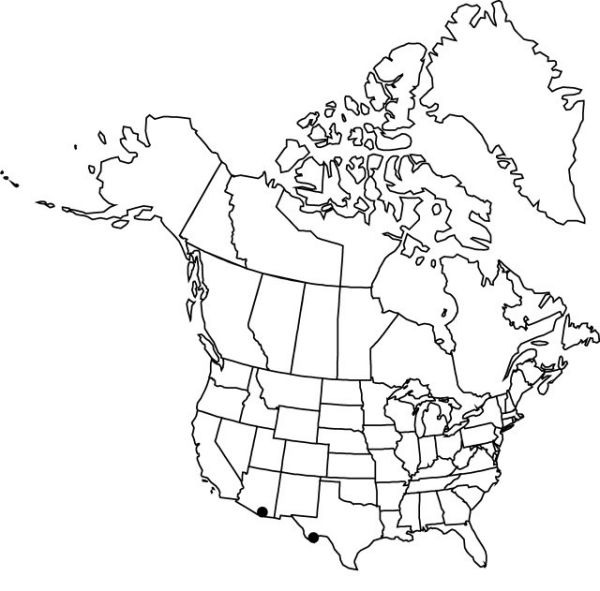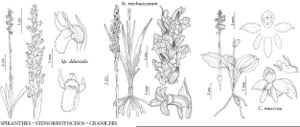Stenorrhynchos michuacanum
Gen. Sp. Orchid. Pl., 478. 1840.
Plants 13–80 cm. Roots 4–10 × 3–6 mm. Stems: sheaths 3–6, cauline, bladeless, striate, scarious, glabrous. Leaves 0–5, mostly basal; distinct petiole absent; blade lanceolate, 10–50 × 1–3 cm. Inflorescences 5–19 cm; floral bracts green basally, becoming reddish-brown apically, elliptic, 21–32 × 15 mm, apex acute or acuminate; basal portions of bracts, rachis, and outer surfaces of sepals densely hairy with many-septate, tapered, tortuous hairs. Flowers cream or white; perianth parts with 1 or more longitudinal green stripes or markings; sepals lanceolate, 9–20 × 3.6–7 mm, apex acute to mucronate; dorsal sepal 15–18 mm; petals lanceolate, 9–20 × 4–5 mm, base arcuate, apex acute; lip 8–16 × 5.2–7.9 mm, with short basal claw ca. 1 mm; column 8–10 mm; anther cap 7–8 mm; pollinaria 8 mm; rostellum needlelike, 4 mm; pedicellate ovary 7–10 mm. Capsules ascending, ovoid.
Phenology: Flowering Sep–Feb.
Habitat: Open grassy slopes, sand pine-oak woodlands, especially in zones of periodic seepage
Elevation: 1900–2200 m
Distribution

Ariz., Tex., Mexico
Discussion
In the flora Stenorrhynchos michuacanum grows in the Huachuca and Santa Catalina mountains of Arizona and the Chisos and Chinati mountains of Texas. This rather robust species has stems 2–10 mm thick. The flowers are densely hairy externally with many-septate, tapered, tortuous hairs. Recent field work (R. A. Coleman 1996) has shown that the species is more frequent than previously thought.
Selected References
None.
